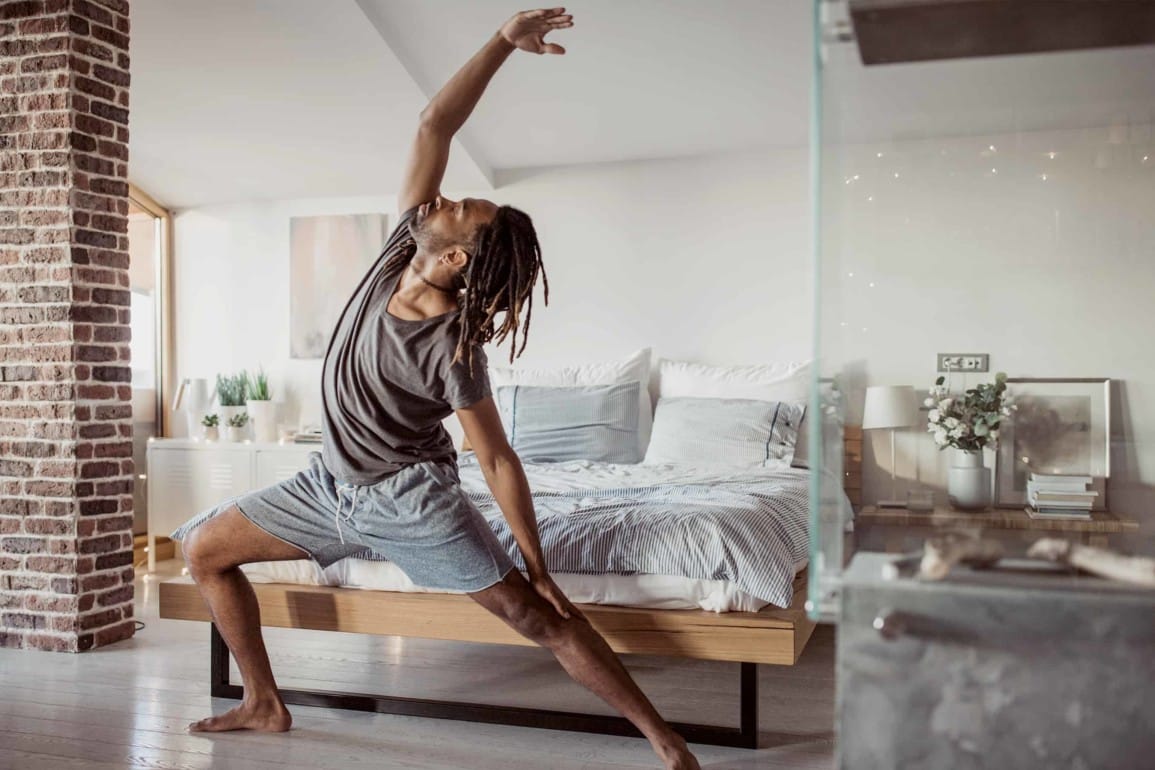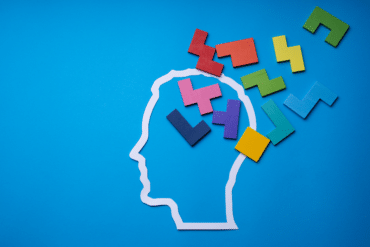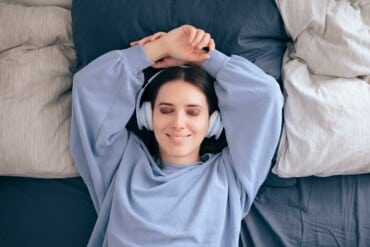Ever thought of introducing nighttime yoga to your bedtime ritual? Stretching before bed is better than you think.
According to the National Sleep Foundation, most adults need an average of 7 to 9 hours of sleep. That’s all well and good, but sometimes it isn’t as easy to fall asleep as we’d like.
Insomnia is an epidemic around the world, caused by things like stress, anxiety, and our chaotic, fast-paced lives. When every second of your schedule is full, how can you possibly find time for sleep, or even yoga before sleep?
The trouble is, the less you sleep, the worse you’re going to feel in the long-term. We need to sleep to refresh our minds and rejuvenate our bodies. Without it, we’re like broken-down cars trying to operate without fuel.
Sometimes, the issues affecting your sleep will be easy to fix. If your room’s too warm, you can turn on a fan. If it’s too nosy, you can whip out a pair of earplugs, or try a white noise machine. But what do you do if the thing causing your insomnia, is your inability to unwind and relax?
The easiest option? Try some sleep yoga.
The benefits of yoga for stress and insomnia are becoming increasingly obvious.
Yoga isn’t just a great way to stretch out your aching muscles. This gentle, low-impact exercise improves your physical flexibility and strength, improves your breathing, and eliminates stress. It could be the perfect addition to your sleep hygiene routine.
So, how do you use yoga for better sleep?
Let’s find out.
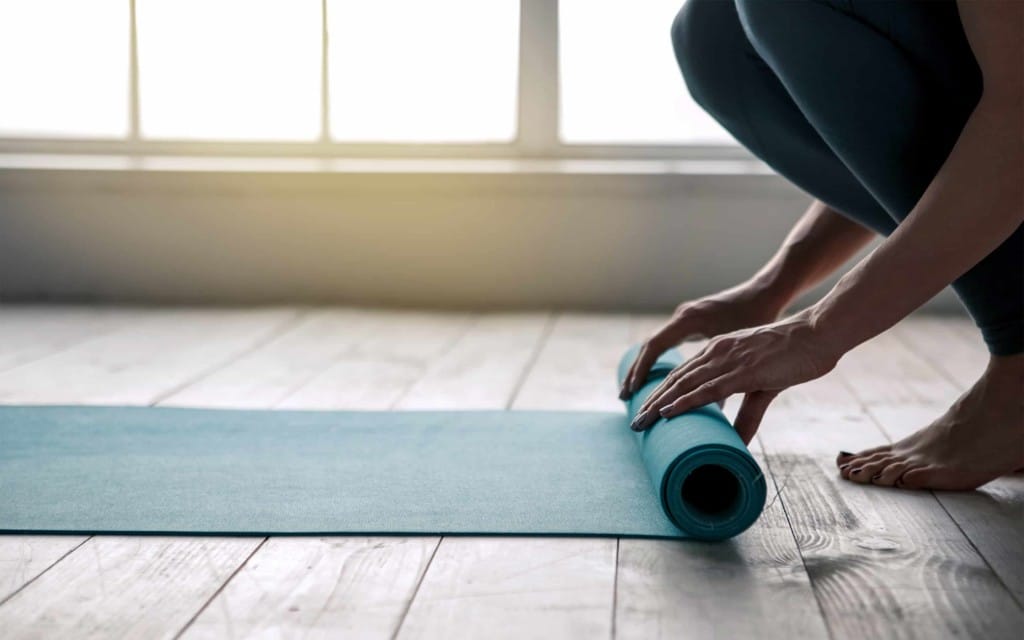
Using yoga for better sleep: What you need to know about stretching before bed
We all know that yoga is tip-top at strengthening the core and boosting flexibility.
However, it could also be the ultimate way to improve your sleeping habits.
With bedtime yoga to help you sleep, you can nod off faster, rest for longer, and even experience fewer disruptions during your dreams.
This is even true for older people who struggle with insomnia. Studies into yoga for sleep and relaxation have found that people aged 60 and older can also benefit from the soothing effects of posing and stretching before bed.
Just about anyone with trouble sleeping will benefit from yoga.
According to one study, pregnant women who use yoga for sleep disorders in their second trimester sleep better and are less likely to wake up during the night. Even cancer patients sleep better with yoga on their side.
So, why bother with using yoga for sleep disorders in the first place?
Why not just keep plowing through until you finally get the rest you need out of sheer exhaustion? The simple answer is that lack of sleep is seriously bad for you.
Just one week of sleep deprivation causes severe side effects, including depression, immune system depletion, and more.
Fortunately, sleep is something that comes from the parasympathetic nervous system — the part of your brain devoted to both rest and digestion.
In yoga, meditation techniques and unique poses are used to support parasympathetic activity. In other words, you’re giving your brain and body the boost it needs to encourage a good night’s sleep.
If you don’t believe stretching before bed can make a difference to your sleeping routine, checking out the research is sure to change your mind.
One study on yoga and sleep found that after practicing a 45-minute sequence before bed, participants managed significant improvements in total sleep time, sleep efficiency, and relaxation. You don’t even need a full 45-minute routine to enhance your sleeping patterns either.
Further studies into yoga for insomnia indicate that even a few minutes before bed can reduce your risk of waking up during the night.
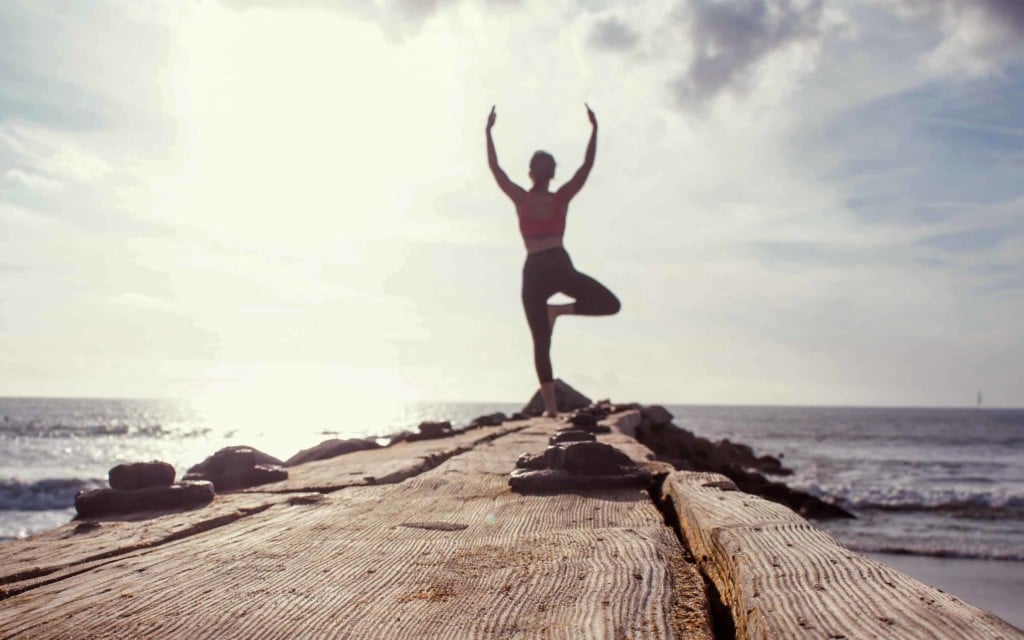
How does yoga improve sleep quality?
So, how exactly does yoga improve sleep?
There has to be more to it than soothing poses and relaxed muscles, right?
Well, currently, research into yoga for insomnia is still ongoing. We’re continually learning more about how yoga and sleeping are linked, and why it’s so important to get the mind and body into the right rhythm before we rest.
What we do know, is that yoga helps to tackle a lot of the issues that prevent proper sleeping. This includes lack of a bedtime routine, excessive stress levels, and disruption during the deeper stages of sleep. Some of the biggest benefits of yoga for sound sleep include:
1. Yoga reduces stress
One of the most obvious advantages of yoga is that it’s great for eliminating stress and anxiety. When you engage in yoga sleep meditation, or mindful yoga, you focus on what’s happening in the moment.
This means that you’re not panicking about what you did or didn’t do at work that day, or what might happen during your meeting in the morning.
Being in the moment calms your senses and reduces feelings of stress and anxiety. This is crucial in any area of your life.
However, it’s particularly essential when it comes to improving sleep. Instead of tossing and turning as your nerves get the better of you, it’s easier to slip into a serene, comfortable period of rest.
2. It gives you a bedtime routine
One of the most common strategies for tackling insomnia is improving sleep hygiene. There are many ways you can enhance sleep hygiene, from getting rid of bedtime distractions to banishing light and sound.
However, it also pays to have a routine that teaches your brain and body when it’s time to go to bed. Having a specific yoga sequence that you use each bedtime is a great way to set yourself up for sleep. You can even chose to do the yoga in bed, if it makes it easier to overcome.
If you know you always go to sleep after you’ve finished doing a few basic poses, your mind will prepare itself for that experience at the same time each night. This trains you to feel sleepy in a more natural and regulated manner.
3. Yoga stabilizes the nervous system
Throughout the day, we’re exposed to constant moments of hyper arousal, when our emotions and our minds are on high alert. You might feel stressed when you’re driving to work, and you get stuck in traffic. High arousal takes a toll on your brain and nervous system, causing you to feel even more exhausted by the end of the day.
Unfortunately, just because your senses are exhausted, doesn’t mean they can switch off. Yoga stabilizes your nervous system and brings you into the rest and digest state. This allows your mind to let go of tension and relax into sleep.
4. It soothes pain and discomfort
You don’t have to have a chronic illness or pain issue to have insomnia. One of the reasons many people use yoga for better sleep is it helps them to eliminate muscle stiffness, joint pain, and gastrointestinal issues.
When you’ve got aches and pains to deal with during the night, it’s much harder to find a position that allows you to comfortably drift into sleep.
Yoga movements are designed to increase strength and mobility without putting excessive pressure on your joints. While yoga for sleep disorders is excellent at relaxing your brain, it’s also great for getting your body into a more restful state too.
5. Yoga improves the quality of your sleep
Crucially, using yoga sleep meditation techniques doesn’t just increase your chances of drifting off to sleep faster. If you stick to your routine regularly, you can also improve the quality of the rest that you get.
One study provided people with insomnia with basic yoga training that they were asked to use every night for eight weeks. According to the researchers, there was a significant improvement in several aspects of the rest that the participants got.
The people in the study took less time to drop off into unconsciousness. They also saw a reduction in the number of times they woke up at night and an increased duration of time between waking. The yoga for insomniacs study also found that people who did their poses religiously slept for longer each night.
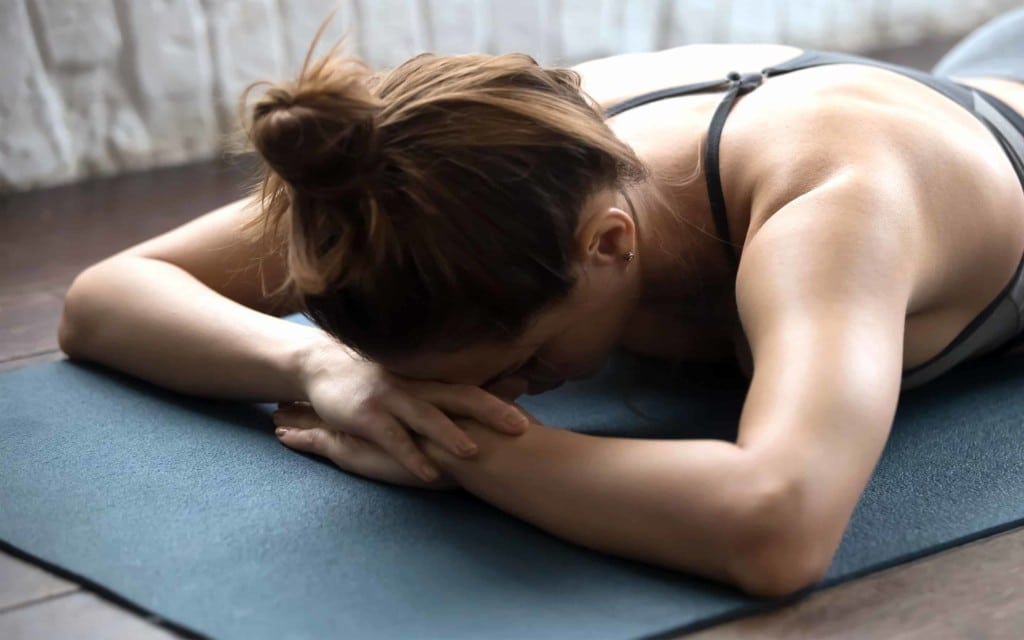
How to use yoga for sleep and relaxation
Even though the research into yoga for rest is still relatively young, there are already numerous studies that indicate this relaxing process really can improve sleep.
Crucially, yoga for insomniacs is particularly good for people who suffer from chronic and ongoing sleep disorders.
Yoga works by calming your mind and the various components in body that would otherwise prevent you from drifting into a restful state of sleep.
Throughout the years, yoga experts have taught people how to use the practice for everything from tackling stress to managing anxiety. In a world where we’re all dealing with more pressure than we can reasonably handle, it’s no wonder that yoga and sleep go hand-in-hand.
The great thing about yoga for sleep is that anyone can use this treatment. Unlike pills and medication, which come with many dangerous and worrisome side effects to consider, yoga is a gentle and pain-free approach to treating sleep disorders.
It’s also a low-impact form of exercise, which means that it’s not going to place undue stress on your muscles and joints. That’s why yoga is excellent for older people and those with pain disorders too.
One national survey found that over 55% of people using yoga for better sleep found the process useful. Additionally, 85% of respondents said that yoga was critical for reducing their stress levels. That means that even if your yoga doesn’t seem to send you to sleep immediately, it could reduce the stress that’s forcing you to stay awake.
So, how do you use yoga to help you sleep?
One part of the process is finding the right poses, which we’ll cover in just a moment.
The other part is getting your breathing right. Your breath is critical to being able to relax and unwind during yoga for stress and insomnia.
There’s a unique practice in yoga called Pranayama, which is all about using breathing techniques to relax your mind and body. The process uses things like lengthened exhalation and diaphragmatic breathing to bring you into the moment and make your yoga sleep meditation more mindful and focused.
One excellent type of Pranayama to try when you’re using yoga for better sleep, is Ujjayi breath. To perform this breathing process, inhale deeply through your nose, keeping your mouth closed, and exhale through your nose.
The key to success is keeping the back of your throat constricted, like you’re saying “haaa.” This exhalation will sound a lot like Darth Vader, so it’s great for getting your Star Wars imitations on point.
After you’ve gotten over the urge to giggle at yourself for your silly breathing, you’ll find that the slow and steady breath helps to bring you deeper into the moment during your yoga poses.
You can combine this breathing with something called “progressive relaxation,” which is a common strategy used in most insomnia treatments. The plan involves tensing and relaxing each part of your body, starting with the tips of your toes and working up to your jaw.
Poses to add to your yoga practice before bed
Now that you’ve learned how to breathe correctly, you can start to work on your poses.
While just about any yoga strategy will help you to relax and unwind, there are some poses that are specifically designed to get the body ready for sleep.
hese movements are all about mobilising the joints and stretching the muscles so that you feel a sense of balance and wellbeing when you’re ready to drift off.
Remember, using yoga to help you sleep might require a bit of practice at first. You might not feel comfortable in every pose from day one. S
ometimes it takes time for your body to get used to the different shapes that you’re trying to create with it. Stick to your routine, and you will eventually begin to see a difference, though.
We’ve put together a list of some of the best poses to support yoga for sleep disorders, and we’ve focused on the options that are easiest for beginners to handle. These include:
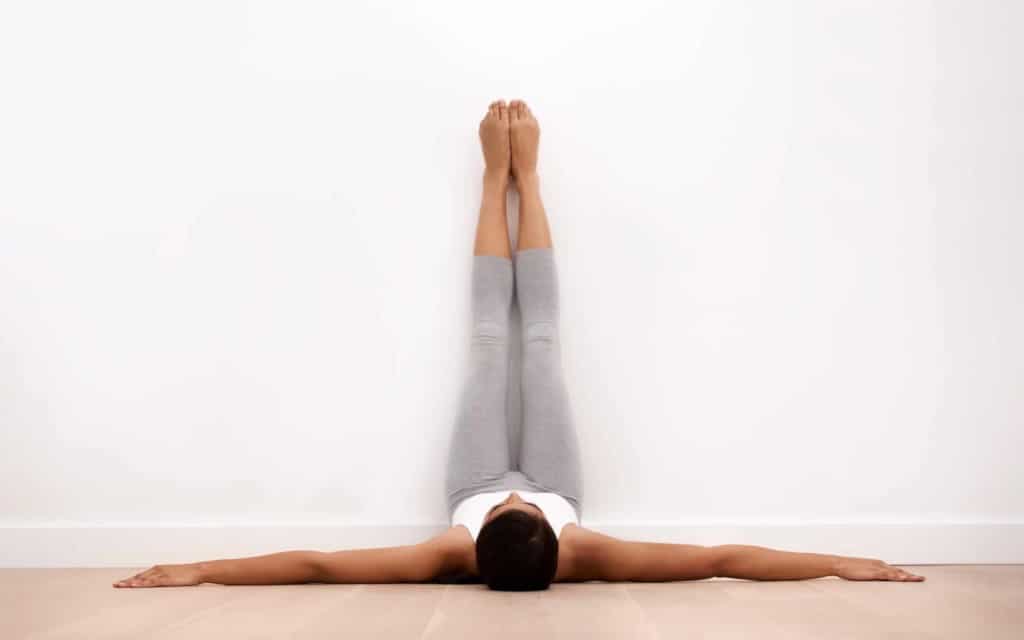
1. Legs-up-the-wall pose
Have you ever just laid on your bed and rested your legs against the wall when you were a kid? Well now’s the time to bring the habit back.
Put a cushion or rolled-up blanket against the wall and lie back so that your spine is aligned with the mattress. Lift your legs straight and rest them parallel against the wall, shuffling forward until your butt is right against the pillow or blanket.
You should end up looking at your toes hovering somewhere above your head. Be careful to keep your legs straight, so you don’t accidentally lose focus and get a knee in your face.
‘This is a great way to get your blood flowing towards your core, so you’ll feel warm and rested in your chest and stomach.
2. Cat pose
The cat pose is a simple and excellent way to get rid of tension in your back, without risking any unnecessary injury. Get on your hands and knees on your mattress, and as you inhale, lift you’re your body so that your back is arched, just like an angry cat.
Try not to over-do the stretch here, as you don’t want to cause yourself any discomfort just before you to sleep. Hold your position in the arched-back pose for a few seconds, then relax.
You can repeat this motion as many times as you like until your spine feels comfortable, and the muscles in your back have lost some of their daily discomforts.
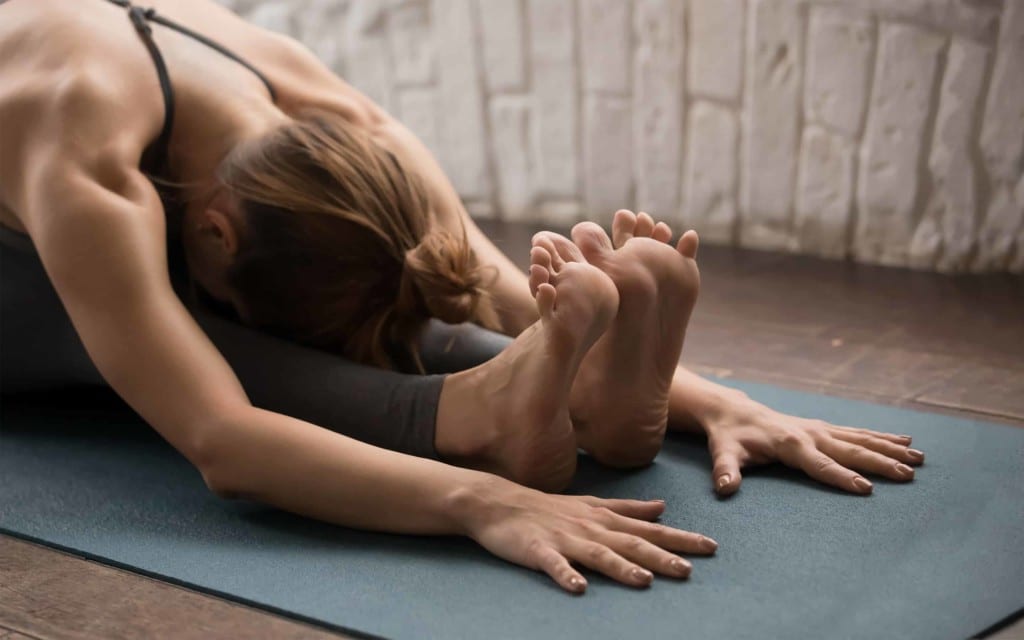
3. Forward fold
This pose creates a sense of relaxation around your hips and pelvis. It’s also great for lengthening your hamstrings, which often become tenser if you spend a lot of time sitting in front of a desk — like many of us do these days.
In this pose, you’ll need to bend one of your legs and keep the other one straight. Unless you have long hamstrings, you’ll need to rest your arms and head on a pillow, a pile of blankets, or a chair.
Remember not to go over the top with your stretching in this pose. The aim is to open up your legs and the rest of your body, so you feel less crunched in on yourself.
Close your eyes when you’re in the pose and take several slow breaths in and out through your nose, focusing on the sense of the gentle release in your hips. When you’re done with one side of your body, switch to the other.
4. The extended child pose
This is easily one of the best yoga for sleep poses for beginners. Start by creating plenty of padding for yourself so that you can sit with your knees apart comfortably.
You’ll be sitting with your bum against your heels, and your knees bent if you’re doing it right. When you’re ready, reach forward with your arms, keeping your fingers pointed, until your forehead touches the bed or floor in front of you.
Spend some time breathing slowly in and out with your diaphragm fully extended. If you want to, you can push your arms out further to deepen the stretch, but don’t go too far. This pose is so comfortable that you might even fall asleep like this without meaning to.
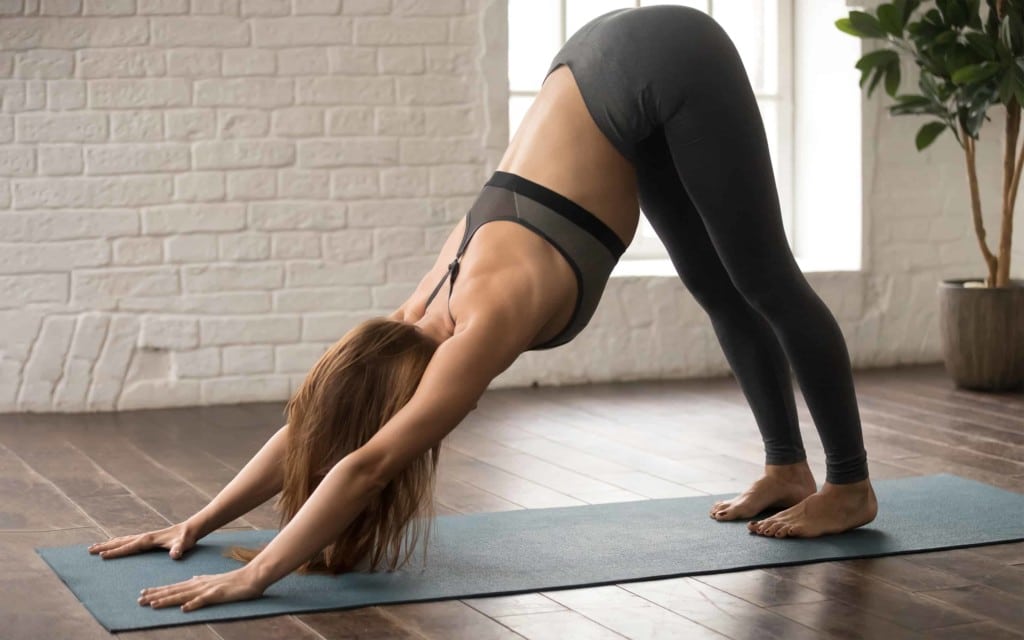
5. Downward dog
Finally, this yoga for sound sleep pose is so popular that if you’ve head of yoga, you’ve probably heard of it. Many people look at the downward-facing dog pose as a more dynamic version of the extended child’s pose. Instead of sitting on your heels, you lift your hips up and into the air so that you can stretch your hamstrings at the same time.
Imagine how a dog stretches with its hind in the air, and its front paws pushed forward into the ground. That’s the kind of position you’re aiming for.
As you lift your rear, take several deep breaths in and out, then relax. You can take a break in the extended child pose between stretches if you want to do this pose more than once.
Is yoga good for insomnia?
Ultimately, there’s no one-size-fits-all strategy to overcoming insomnia.
Some people will need treatment in the form of CBT or sleep deprivation therapy. Other people will only be able to get to sleep after they address their situation with a doctor and get medication to help them drift off.
However, for many people, yoga for sleep can be a powerful way to relax and unwind at bedtime. If your issue with insomnia is caused by the fact that you just can’t switch off when you go to bed, yoga can help with that.
Now that around 70 million people in America suffer from insomnia, and countless other people worldwide experience the same issue, it’s worth giving things like yoga a try.
As a solution that’s great for both your physical and emotional health, yoga features virtually no adverse side effects, and no downside for people who want a quick and relaxing way to overcome their sleep issues. Try it for yourself and discover how yoga can ease you into a more restful sleep state.
Need more advice on sleeping well? Don’t forget to subscribe to Siestio for more insights into the wonderful world of sleep and dreaming.
Siestio. Sleep Matters.
General advice disclaimer
This article contains general tips and advice. However, no diet or exercise program should be started without consulting your physician or other industry professional first. For more information read our full disclaimer here.

